Bigleaf Maple Syrup
Keep an eye out for upcoming tree-tapping events!
=
Oregon State University Bigleaf Maple Festival:
Come Try Bigleaf Maple Syrup & Learn How to Tap at The Bigleaf Maple Festival This May!
On Saturday May 13, 2023, Oregon State University is hosting Oregon’s first ever Bigleaf Maple Festival at the 4-H Center in West Salem! Bigleaf maple syrup and other bigleaf-sourced foods are on the rise with Oregon farmers, homesteaders and foresters starting to tap their trees and make products for the local marketplace. It's the beginning of an exciting new and sustainable industry for Oregon! The bigleaf festival is a family friendly event where you can taste different bigleaf syrups, see setups for the hobbyist and the commercial producer, and talk with experts at mini-workshops. The festival will have kids’ activities, syrup boiling demonstrations, nature walks, food and live Americana acoustic music. Come experience the wonder of bigleaf maple sugaring!
May 13, 2023, at the 4h Center in West Salem. 11:30am-6:00pm. $10/adult, $5/child, $20/family per vehicle. You must have a ticket to attend, and tickets must be purchased online. Visit https://oregontreetappers.net/festival for more information and tickets.
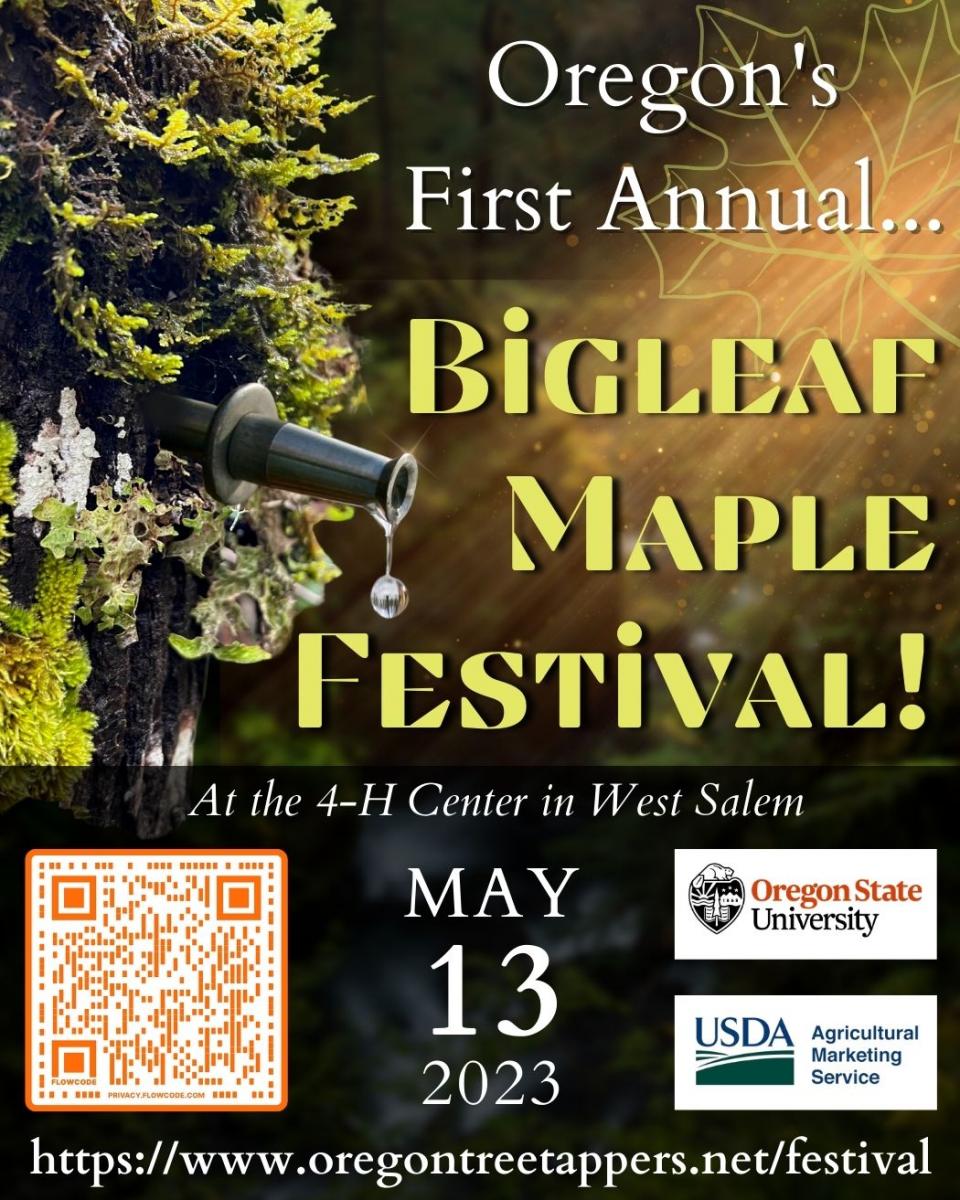
An Emerging Industry in Western Oregon
As most people with western farms and forestland know, bigleaf maple is an abundant, fast growing tree. What many people do not know is that just like its sugar maple cousin in the northeast that is the source of most real maple syrup on store shelves, bigleaf has sugary sap and makes a delicious syrup as well. The flavor is similar but most tasters describe it as more complex, often with a preference for it over sugar maple.
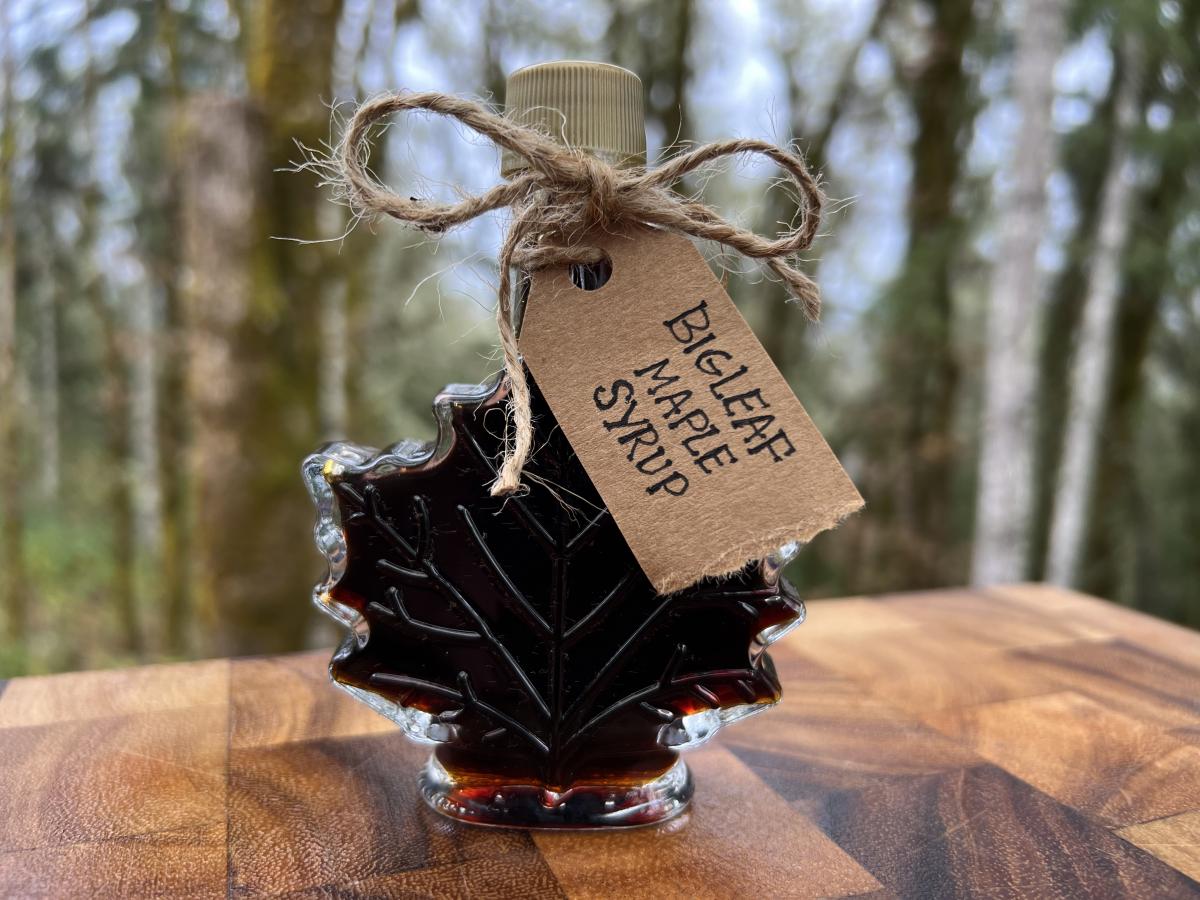
Eric Jones from the OSU College of Forestry has assembled an interdisciplinary team of researchers to help landowners enter into commercial bigleaf maple sap procurement and processing. The team has been awarded two consecutive grants from the Agricultural Marketing Service Acer Access and Development program. Maple syrup and other maple sap products are rapidly growing markets and the Pacific Northwest has a future role to play.
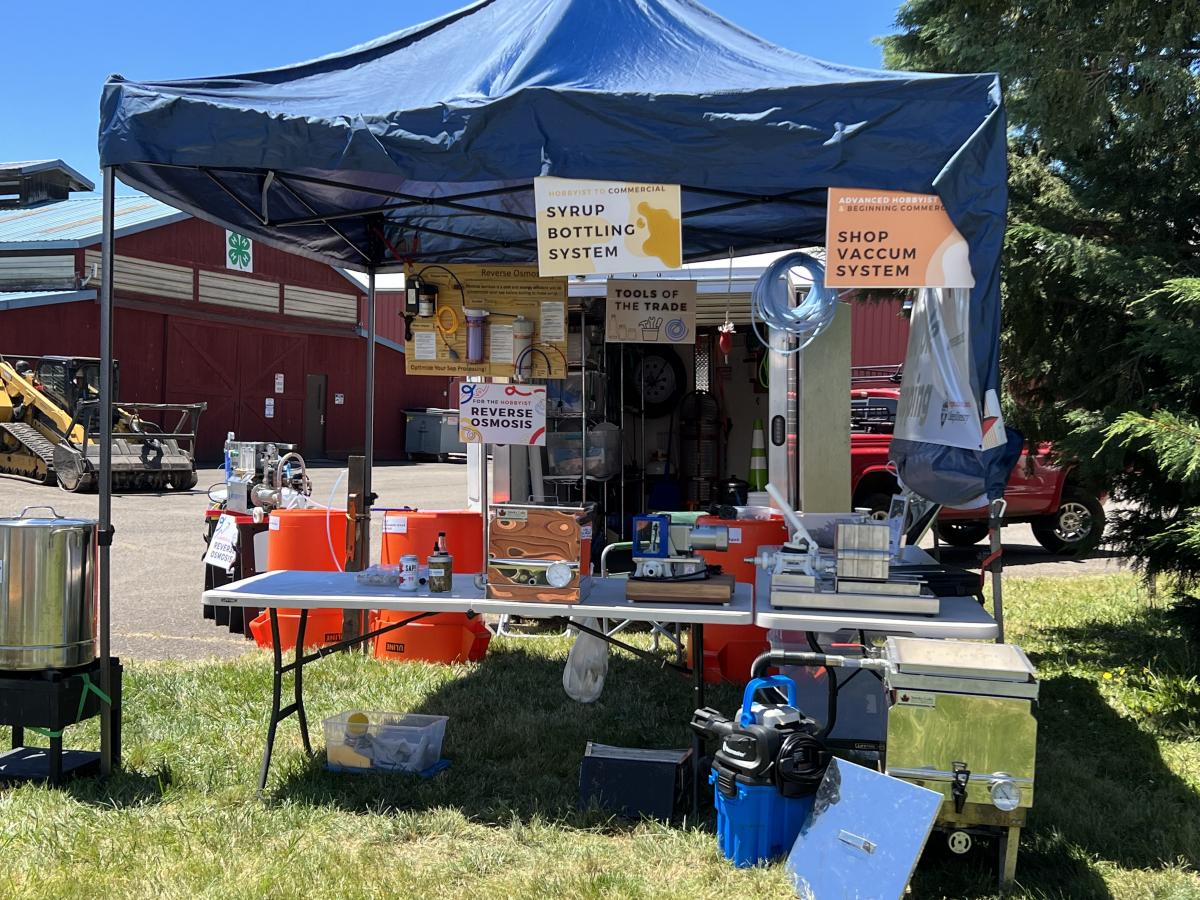
When exactly do we begin tapping trees?
Broadly speaking, tapping maple trees occurs in winter. In the northeast the sugar maple trees can be frozen all winter so the tapping occurs at the end of winter. In Oregon, given our temperate rain forest conditions, we can tap throughout the winter when the conditions are right. You need freezing nights and above-freezing days for the sap to run so there may be many chances to tap throughout the winter. However, warm days can also cause problematic bacteria to flourish so the OSU team is studying best practices for mitigating problems like bacteria.
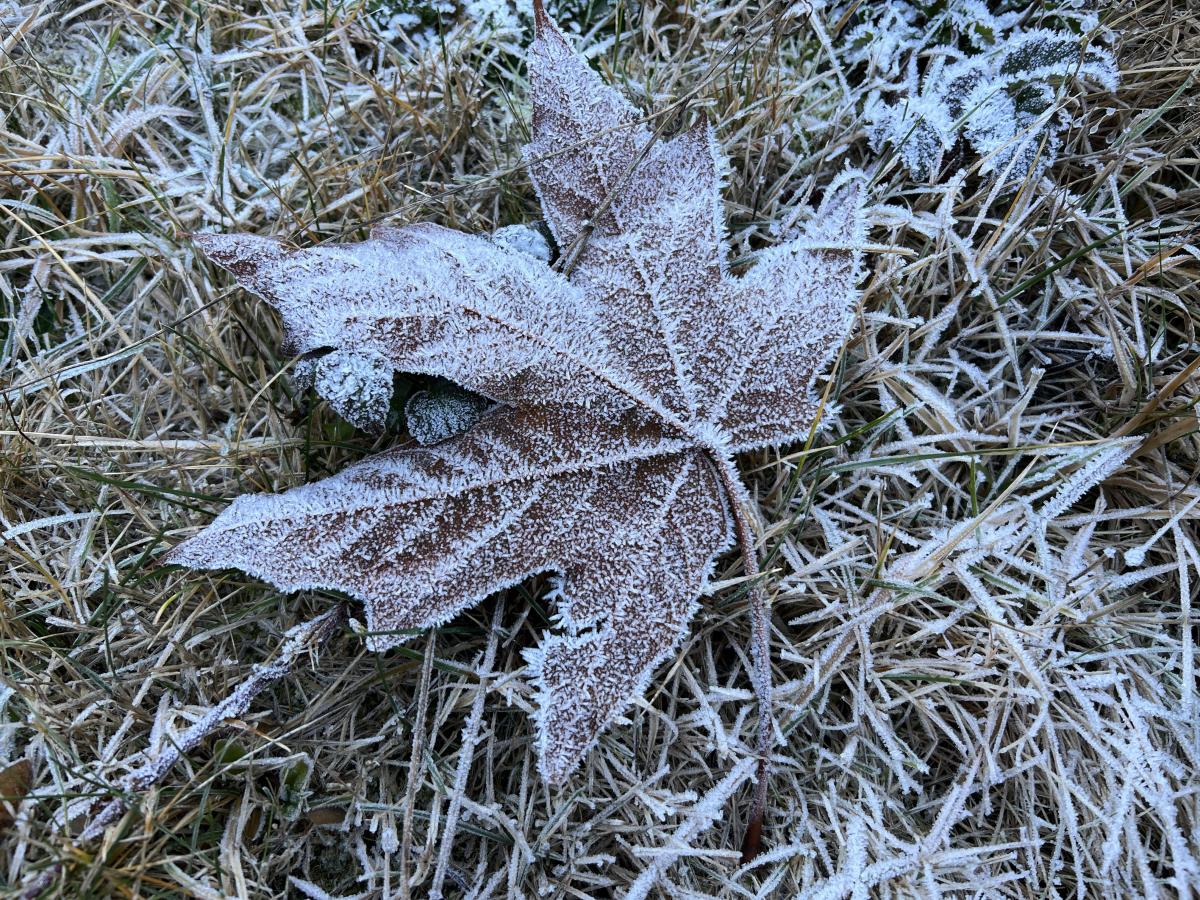
Although some small hobby tapping and even some small commercial tapping has occurred in Oregon it has been rare. The reason for this is that bigleaf sap has less sugar than sugar maple so takes a lot more time and energy to make a finished product. However, recent technological advances with reverse osmosis machines to remove water and vacuum tubing systems to collect sap have not made it economically viable to tap bigleaf. The OSU team has been investing in equipment and working with landowner partners and through public events to demonstrate how the equipment works so landowners with an interest in becoming commercial producers can make informed decisions about their investments.
If you’d like to learn more about bigleaf maple tapping, start by visiting the OSU team’s public website, www.OregonTreeTappers.net, you’ll also find a wealth of background information. You can reach out directly to Jones at eric.t.jones@oregonstate.edu with questions and advice.
Also keep an eye out for public bigleaf maple educational events at Granges, Tree Schools, and other forestry and agricultural meetings.
Lastly, the Oregon Maple Project is a non-profit partner to the OSU project that is teaching basic sugaring setups and processing and has a sugaring collective of small producers that are learning together. The website for the Oregon Maple Project is www.oregonmapleproject.org, you can reach out to Eliza Nelson at info@oregonmapleproject.org with questions or for more information.
Bigleaf Maple as an Ecological Leader
In addition to its syrup, the bigleaf maple has many things to offer us which we are still discovering. In the spring, its budding flowers can be canned, or used fresh to top salads, garnish soups, or be fried into delectable fritters or even tempura! Visit https://www.oregontreetappers.net/food-art/recipes for recipes and more!
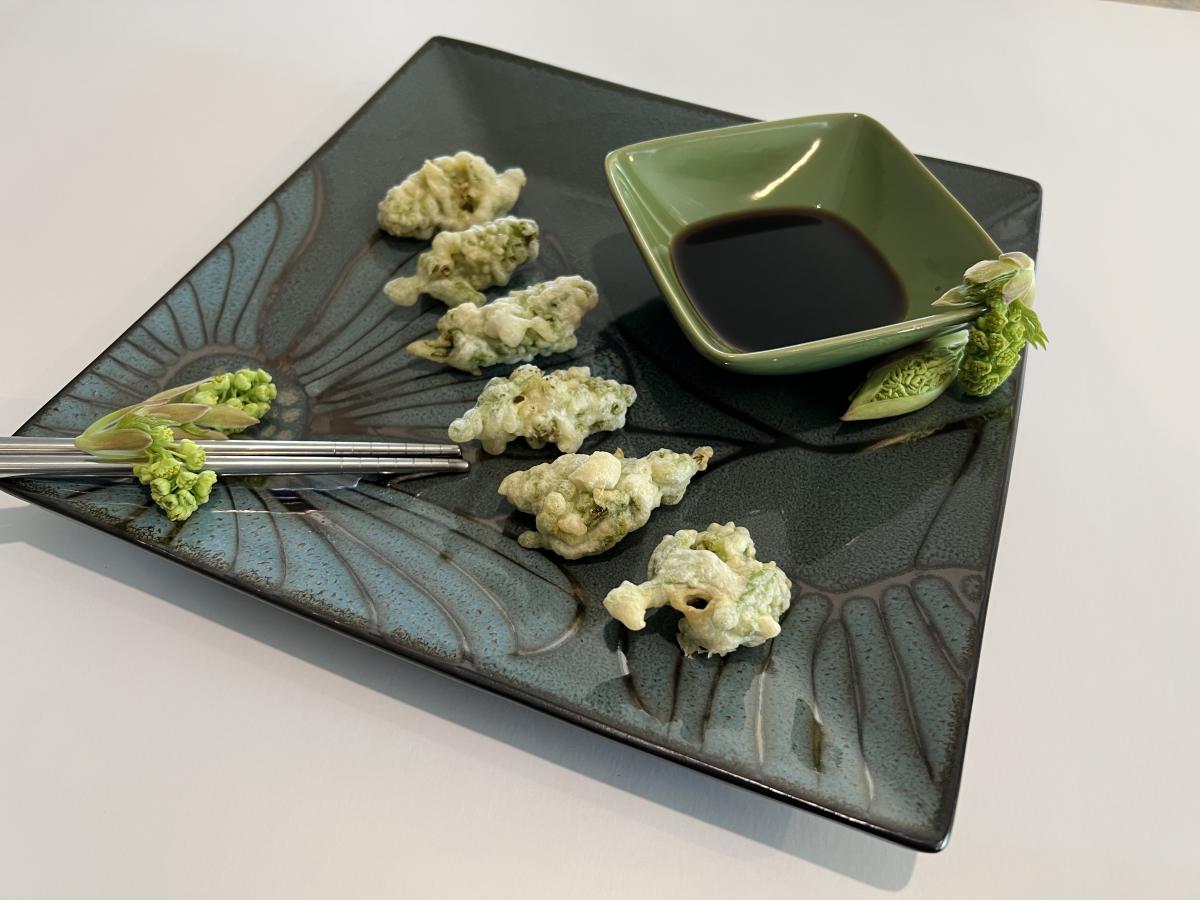
Bigleaf maples support many forms of life, in fact, they carry greater load of mosses and other plants than any other tree species in the PNW coastal region. They also have the largest leaves of any of our native broadleaf species. Coppiced stumps return vigorously after cutting, or fires, and some of the research observations between OSU and the OMP indicate that the younger saplings may be more active producers of sap than their older counterparts. Much of tree tapping at this stage remains a mystery, so experimentation by tapping different sized trees is recommended- and your observations are very useful to our growing community tapping project!
Indigenous Traditional Ecological Knowledge of Bigleaf Maples
For the OSU Bigleaf Maple Project, we would like to explore what it might look like to manage forests with and for maples, or as OMP director Eliza Nelson says, embrace the Maple Movement. To us, bigleaf maples are more than just a tappable product- they are teachers that share so much of themselves with human and non-human entities of the forest. As we challenge preconceptions from colonial science, it is important that we acknowledge Indigenous Traditional Ecological Knowledge as the source of ecological reciprocity, multispecies interconnection, and place-based knowledge.
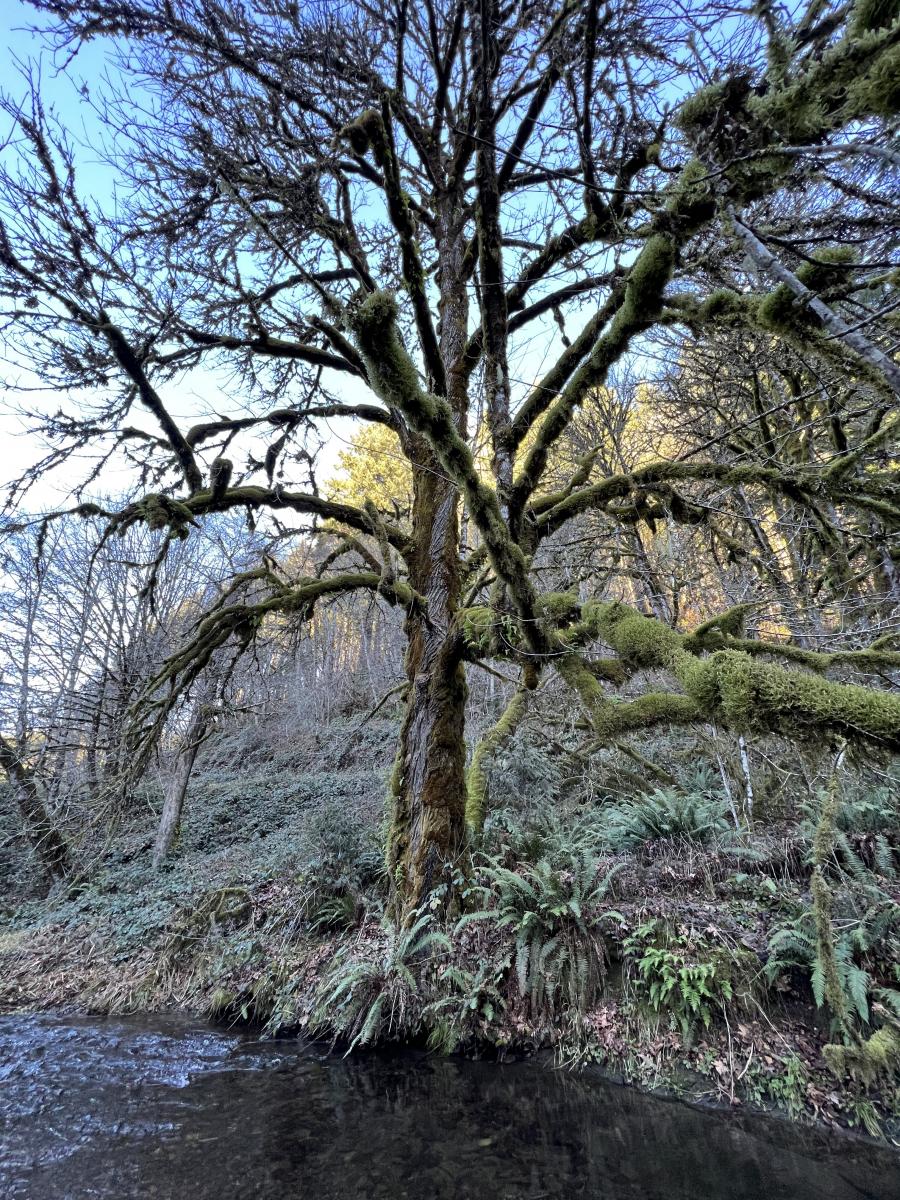
Based on initial research into foraging and traditional uses of bigleaf maples, we have gathered information from various identification guidebooks of the plants of the Pacific Northwest listed below:
Source: Page 45. Pojar, MacKinnon, A., MacKinnon, A. (Andrew), & MacKinnon, A. (Andrew). (2016). Plants of the Pacific Northwest coast: Washington, Oregon, British Columbia & Alaska (New edition). Partners Publishing.
“The Saanich used preparations from [bigleaf] maple to make an internal medicine and to treat sore throats, and the leaves were rubbed on a man’s face at puberty so he would not grow thick whiskers.”
“[Bigleaf] maple is called the “paddle-tree” in many First Nations languages because the wood was used to make paddles. It was also used for spindle whorls and various other instruments. The big leaves are good for making temporary containers.”
“The sprouted seeds were eaten by Nlaka’pamux.”
“The sap can be used to make a passable maple syrup, but this was not done by aboriginal peoples. It takes several times more bigleaf-maple sap then eastern-sugar-maple sap to make a given quantity of syrup.”
Source: Page 167. Edible and Medicinal Flora of the West Coast: The Pacific Northwest and British Columbia. Collin Varner. 2020. University of Washington Press.
“The mature winged seeds (samaras), act as whirligigs when they fall; they are bountiful and an important food source for birds, squirrels, mice, and chipmunks.”
“The plentiful wood was important to Indigenous cultures as a fuel and for carvings, paddles, combs, fish lures, dishes, and handles. The large leaves were used to line berry baskets and steam pits.”
“Our Pacific Northwest maples do not have the sugar concentration of the eastern sugar maples. However, in spring our maples produce excellent syrup.”
Source: The Confederated Tribes of the Grand Ronde Community of Oregon Educational App.
“Uskan-stik” The Chinuk Wawa word for “maple”
Source: Chinuk Wawa (Chinook Jargon) etymologies by Henry Zenk, Tony Johnson, Sarah Braun Hamilton. Confederated Tribes of Grand Ronde, Oregon. https://lingpapers.sites.olt.ubc.ca/files/2018/02/2010_Zenk_Johnson_Hamilton.pdf
“Stik”. Ref: JH 1928, VH, WB, EJ 'stick, bush, tree, woods; wood'. Etym: From English "stick". Cf Bay Center CW 'tree'. (Page 327)
“Uskan”. Ref: JH 1928, LK 'cup, dipper, can'. Etym: From a Lower Chinook noun: 302 ú-šgan 'basket, cup, bucket' (Boas 603, 609); í-šgan 'cedar' (Boas 603). (Page 302-303).
Page last edited 1/26/2023